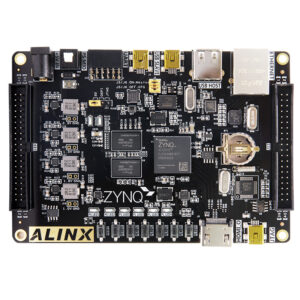Pulse-width modulation (PWM) is a modulation technique used in communications systems to encode the amplitude of a signal into the width of the pulse (duration) of another signal. Although this modulation technique can be used to encode information for transmission, its main use is to allow the control of the power supplied to electrical devices, especially to inertial loads such as motors.
Pulse width modulation (PWM) is a powerful technique for controlling analog circuits with a microprocessor’s digital outputs.
Why we need PWM?
Though we have continuous set of values in the name of analog signal then why we look into PWM? The Reason is here,
Analog voltages and currents can be used to control things directly just consider simple analog radio; a knob is connected to a variable resistor. As you turn the knob, the resistance goes up or down.
Though analog control may seem simple, it is not always economically attractive or otherwise practical. For one thing, analog circuits tend to drift over time and can, therefore, be very difficult to tune. Precision analog circuits, which solve that problem, can be very large, heavy and expensive. Analog circuitry can also be sensitive to noise. Because of its infinite resolution, any noise on an analog signal necessarily changes the current value.
Reason for going into digital mode, by controlling analog circuits digitally, system costs and power consumption can be drastically reduced. What’s more, many microcontrollers and DSPs already include on-chip PWM controllers, making implementation easy.
Functioning of PWM:
PWM is a way of digitally encoding analog signal levels. Through the use of high-resolution counters, the duty cycle of a square wave is modulated to encode a specific analog signal level.
Now some questions arises on our mind how it becomes digital when we controlling analog one the reason is here, at any given instant of time the full DC supply is either fully on or fully off. The voltage or current source is supplied to the analog load by means of a repeating series of on and off pulses. The on-time is the time during which the DC supply is applied to the load, and the off-time is the periods during which that supply is switched off. Given a sufficient bandwidth, any analog value can be encoded with PWM.
Duty cycle:
Duty cycle is the percentage of one period in which a signal is active. A period is the time it takes for a signal to complete an on-and-off cycle. As a formula, a duty cycle may be expressed as:
D = T/P*100%
Where D=Duty Cycle; T=Time of the signal is active; P=Total period of the signal.
Where 10%, 50%,90% are the duty cycle.
Consider P=10 sec
- Duty cycle=10%; which states Vout is high for 1 second.
- Duty cycle=50%; which states Vout is high for 5 second.
- Duty cycle=90%; which states Vout is high for 9 second.
Advantages of PWM:
PWM is that the signal remains digital all the way from the processor to the controlled system; no digital-to-analog conversion is necessary. By keeping the signal digital, noise effects are minimized. Noise can only affect a digital signal if it is strong enough to change a logical-1 to a logical-0, or vice versa.
With the help of duty cycle in PWM we can easily control the device like LED, motors and so on.
For more information please visit: www.tenettech.com
For technical query please send an e-mail: info@tenettech.com







